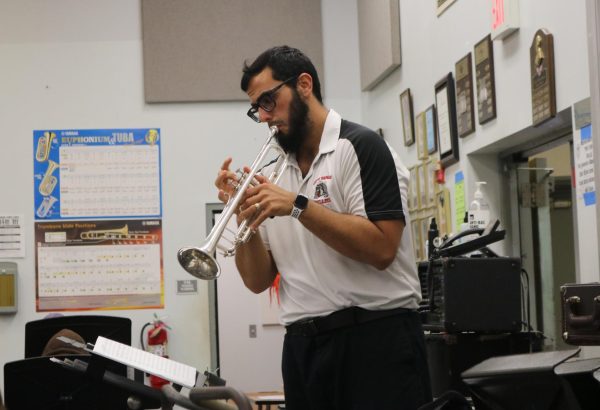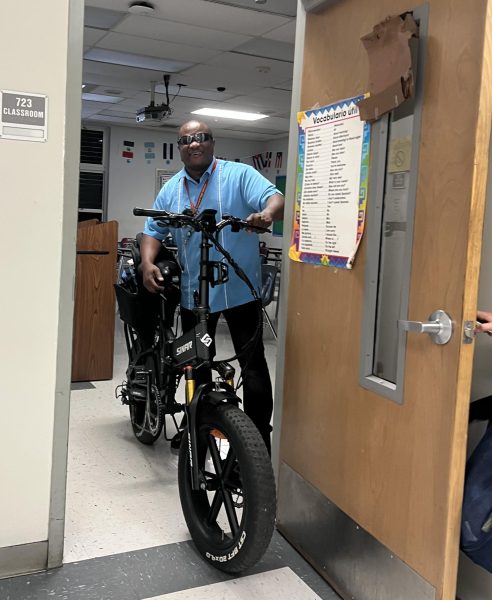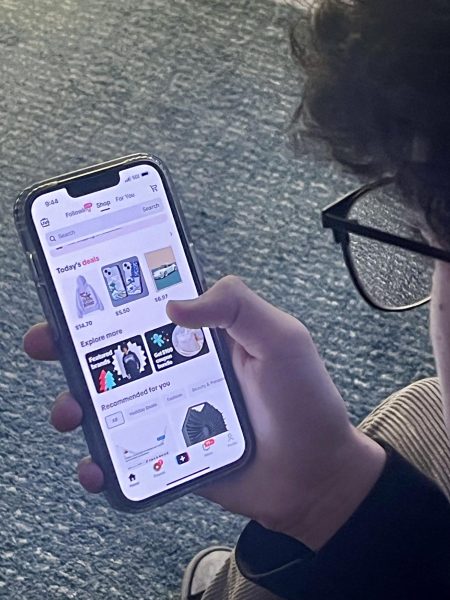The Two Sides of ASMR
May 13, 2019
Sluuuurpp…Scratchhhh…Shhhhhh…Believe it or not, those sound are the new hottest lullaby.
If you are on social media or use YouTube, then you’ve probably heard of ASMR (Autonomous sensory meridian response), a relaxing, often sedative sensation that begins on the scalp and moves down the body. ASMR is usually described as a static-like or tingling sensation on the skin that typically begins on the scalp and moves down the back of the neck and upper spine.
There are many sounds that may trigger these sensations such as the most common ASMR trigger whispering. Other ASMR triggers are tapping, gentle scratching of hard surfaces, blowing, role play, methodical work, crinkling, and buzzing. The preferences for specific ASMR triggers are very subjective, so no one trigger is universal to everyone.
“I like the whispering and soft noises, because it feels nice and it’s relaxing,” said Layla, a student at SBHS.
For most of the people who do experience ASMR, the euphoric tingling can result in a feeling of relaxation. For example, before bedtime, it’s been said to help overcome insomnia, an inability to fall asleep or to stay asleep, and many people use ASMR in mediation to help them relax. It can also help in reducing stress level, improved blood flow, digestion, and mood.
The leader of ASMR University’s studies, Dr. Craig Richard, wrote a book called “Brain Tingles” where he teaches all about ASMR and how to stimulate deep relaxation, improve sleep, and the delightful tingles in people everywhere.
In the article “Origin Theory of ASMR”, Dr. Richard says that he believes ASMR can be helpful to some individuals diagnosed with insomnia, anxiety, or depression.
“The ability of ASMR to induce sleepiness, comfort, relaxation, decreased stress, and elevated mood holds great promise for individuals with these disorders.”, said Dr. Richard.
The benefits of ASMR have not yet been scientifically established but many people on social media have shared their experiences and how it’s been helpful.
“I suffer from anxiety and sitting down watching and listening to these videos has helped me find a way to relax and I think that has really improved my mental health.”, said a student at SBHS.
Researchers from the University of Sheffield’s Department of Psychology investigated whether ASMR has the potential to benefit the physical and mental health of those who experience it. This study found that those who experience ASMR had significantly reduced heart rates while watching ASMR videos compared to those who do not experience ASMR.
Dr Giulia Poerio, of the University of Sheffield’s Department of Psychology, said: “Our studies show that ASMR videos do indeed have the relaxing effect anecdotally reported by experiencers – but only in people who experience the feeling. This was reflected in ASMR participants’ self-reported feelings and objective reductions in their heart rates compared to non-ASMR participants. What’s interesting is that the average reductions in heart rate experienced by our ASMR participants was comparable to other research findings on the physiological effects of stress-reduction techniques such as music and mindfulness. “
In another experiment, over 1,000 participants took an online survey after watching a selection of ASMR and non-ASMR video clips, they were told to state how frequently they experienced ‘tingles’ and their emotional response to each video.
This study found that, non-ASMR participants compared to those who experience ASMR showed no significant differences in their affective responses to the non-ASMR videos. Those who do experience ASMR reported more frequent tingling, increased levels of excitement, calmness, and decreased levels of stress and sadness.
Dr Tom Hostler, Lecturer in Psychology at Manchester Metropolitan University, said: “The online study found that people who get ASMR reported feeling both more excited and more calm, as well as less stressed and less sad after watching ASMR videos, compared to people who don’t get ASMR…It has been widely anecdotally reported that ASMR helps people to relax, but ours is the first published experiment to show these changes in emotion.”
All though there are many possible benefits, ASMR doesn’t work for everyone. Meaning that they’ve never experienced it, or they either don’t produce any type of reactions or don’t enjoy the reaction that they receive from ASMR. Some may have not found their trigger, some people may think of it as “creepy”, unpleasant, or just don’t understand it, and some may simply not be able to tolerate it.
As a result of the dislikes and/or strong opinions that some people have for ASMR, it sometimes causes embarrassment for those who do enjoying it.
Briana Ferro, a student at SBHS said: “I like the food ASMR because I like to see the food I don’t know; I feel like I’m eating it with them. I also like the mic brushing ASMR because it’s kind of soothing and it helps me fall asleep…It’s not really something I’m embarrassed about because it’s kind of normalized in internet culture.”
People on websites like reddit, have shared how they enjoy ASMR, but it can be uncomfortable to share their enjoyment or embarrassing to get caught watching videos because of the bad connotations that some may have about ASMR. Some tend to keep it a secret from people unless I they’re comfortable and I know they won’t judge by them.
An anonymous reddit user said: “I tend to keep it a secret from people unless I am comfortable, and I know they won’t judge me for it. It’s embarrassing when I’m on my laptop listening to someone whisper or someone tap their nails, and someone sees it and thinks I have some sort of fetish or something. But once I tell people why I’m watching it and about ASMR then they don’t think it’s as weird.”
Since its rising popularity on platforms like YouTube, it is becoming more well-known and slowly accepted. Now, some figure, opening discussions about ASMR may give a better chance for people to get a good first impression.
More than 11M ASMR videos have been published on YouTube, and with over 1.3M published in February 2018. A single video on YouTube can get up to 40 million views. The image below, shows the YouTube search interest in ASMR that has been steadily increasing over the course of the past five years, according to Google Trends data. The chart show how a huge spike in searches for ASMR towards the end 2017 and popularity has continued to grow steadily since then.












